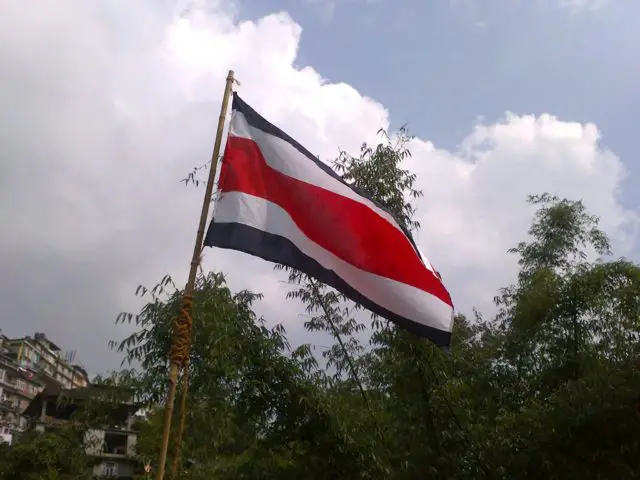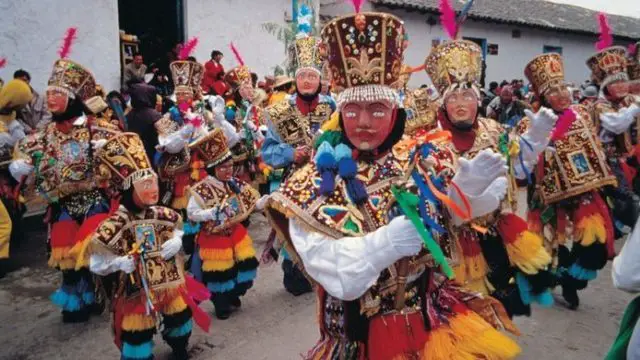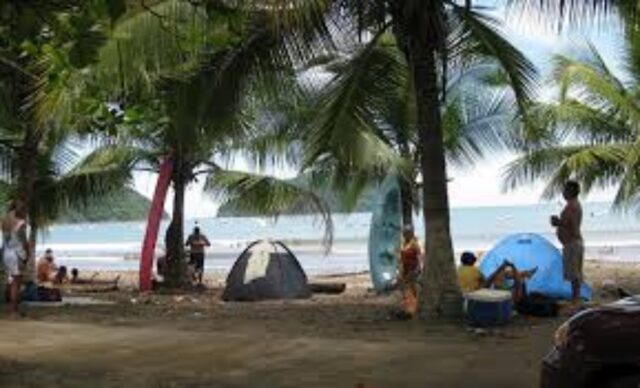Colonization and conquest
Around 300,000 to 500,000 people, distributed in 22 tribes, inhabited Costa Rica when Christopher Columbus arrived, in 1502, on Uvita Island, on the Atlantic Coast. The impenetrable jungle, the resistance of the aborigines and the apparent absence of gold, contributed so that the Spanish did not give much importance to Costa Rica. Some colonizers entered the national territory for the first time, through the area that today is known as the province of Guanacaste.
Peace and democracy
With the abolition of the army in 1948, Costa Rica consolidates a vocation of peace and democracy that Costa Ricans have perhaps always had. Instead of spending on soldiers and weapons that kill, Costa Rica has invested those resources in health and education.

*Costa Rica’s Magic Awaits You! (Part 2)*
This decision has made this country a peaceful and peace-loving people. Its first Head of State was a teacher, a man whose concern was to ensure that there would always be one less tear and one more ear on the Costa Rican table.
The universal right to vote, the freedom of action of political parties and citizens, are instruments that have strengthened local democracy. Over the years, Costa Rica’s democratic system has become an example to the world.
This fact was reconfirmed in 1987 when then-President Oscar Arias Sánchez won the Nobel Peace Prize, after fighting tirelessly for the pacification of Central America, which began with his historic “Peace Plan”.
Education system
Undoubtedly, the free and compulsory public education system, established since 1917, has played a preponderant role in strengthening the high cultural level of Costa Ricans. Students can attend free lessons until the end of the 9th year of secondary education. After this educational cycle, they will be able to seek different forms of financing to continue their studies, including a wide scholarship system.

The first state university was founded in 1843. In recent years, a large number of private universities have been established in the country.
Human rights protection
Respect for the dignity of all human beings, for personal freedom and for peace, is immersed in being Costa Rican. Slavery was abolished in 1823. The last execution took place in 1859 and the death penalty was officially abolished in 1883. The woman won her right to vote in 1949.
So that is how ‘Ticos’ are
The joint effort and the orientation to dialogue constitute an integral part of the Costa Rican culture. Democratic spirit, decisions that seek consensus and agreements that do not require military intervention, have become a whole way of life.
Currently the ‘Ticos’, thus known for their tendency to use diminutives, place a very important value on the family. This has facilitated the strengthening of the social structure and the solidarity character of the nationals.
Because much of the economy is based on agriculture, the Ticos are deeply rooted in the land. Owning at least a small piece of land is part of the Costa Rican tradition. This has also been an important factor in the distribution of wealth and the consolidation of national democracy.
Since 1870, Costa Rica has been entered into the world market through the commercialization of coffee, the country’s first export product for many years. In the middle of the 20th century, products for export were diversifying until tourism, at the gates of the new millennium, as the first foreign exchange generating activity in the country.
Art and culture
Because of the internationally recognized National Symphony Orchestra, due to the versatile movements of dance, the vast and high quality of the pictorial and sculptural representations, or its many folkloric manifestations, Costa Rica is a mosaic of culture that manifests itself on a daily basis.

Traditions
Every year, specifically every August 2nd, thousands of Costa Ricans walk great distances to the province of Cartago to worship the Virgin of the Angels, Patroness of Costa Rica.
Another of the manifestations of popular culture in Costa Rica is the famous “Masquerade”, which takes place at different times of the year during the celebration of the Patron Saint Festivities of any town in the country. People disguised with large masks of bright colors, dance through the streets to the rhythm of the music of a small band called “Cimarrona”.
A place that offers you the warmest attention
Offering a warm and genuine hospitality to visitors is one of the main objectives of the Costa Rican Tourism Institute (ICT). Costa Rica has so much to offer that a first link in the country should be a travel agency that helps visitors organizing their vacation plans. Nobody will be frustrated.
More than 200 travel agencies and tour operators, some of them specialists in natural adventure, sports or business meetings and conventions will facilitate any choice. And to feel part of the culture and understand the most intimate secrets of nature, it is important that the visitor has the knowledge and help of specialized guides in different subjects.
In Costa Rica, tourists can travel almost anywhere, in modern and comfortable buses. Those who want to rent a vehicle will find a wide variety of qualities, including four wheel drive vehicles that are ideal for traveling on secondary roads. If the tourist is going to drive, it is important that they do so carefully and that they also know the main traffic laws of the country.
If the visiting time is short, it will be best used by using local flights, ideal for transferring to distant places in a matter of minutes. It should be noted, however, that some areas of tropical forest are only accessible by river transport.
The 2 Costa Rican airlines, or the dozens of foreigners who arrive in Costa Rica on a daily basis, do their best to come every day to this exclusive destination in America, where its people and the wealth of its natural resources make it possible for the visitor to meet again with himself/herself and with the paradisiacal recreation of nature.
From a ‘bed and breakfast’ to the convention center
“Bed and breakfast”, bungalows, cabins, hostels, apart-hotels, fishing camps, hotels of up to 5 stars or convention centers, are opportunities that Costa Rica offers for every need, taste or budget. Most hotels have between 21 and 60 rooms. The architecture of some hostels is rustic and tropical, and they are built with wood and bamboo.

In each of them, regardless of their location, the most varied services are offered; from the reservation of an airline, to the rental of a plane or a cell phone. It is not necessary to discriminate between pleasure and business. Costa Rica is the destination that offers any service that the visitor requires.
On the beach, in the airline , in the main cities, on land or in the air; on, or under the water, there are hundreds of options distributed throughout the national territory. Converting the tourism industry into a sustainable activity, from the environmental, economic and social point of view, is one of the main goals of the governing body of tourism development in Costa Rica: the ICT.

